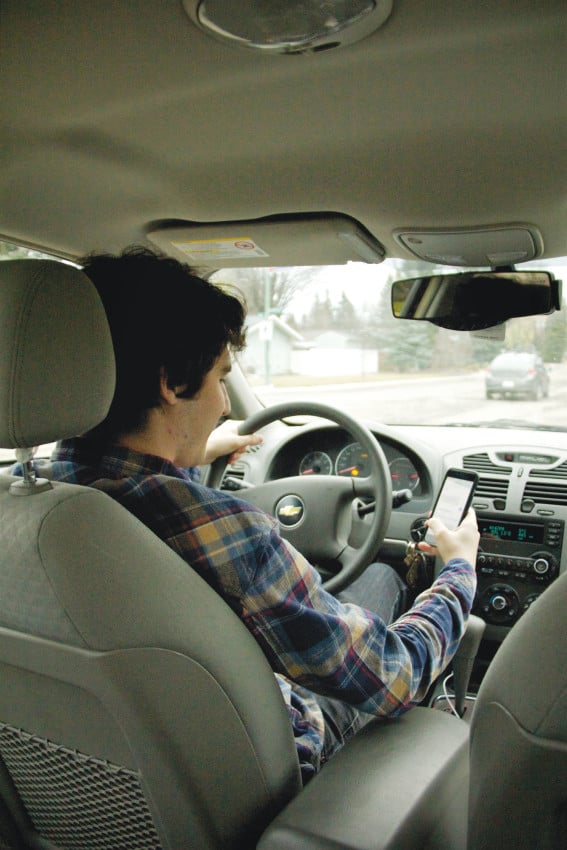ASHLEY BRITZ
It’s painfully obvious that students are often glued to their phones, and most can’t even walk between classes without texting. However, people walking around with cell phones isn’t the problem — the real issue is when people decide to use their phones while driving.
Everybody knows that texting and driving is dangerous. You can even be fined if you get caught. Yet, people still do it.
 I have had several occasions where I have been a passenger in a car while the driver was texting. Some texted continuously, only glancing up every few seconds to make sure that they weren’t swerving out of their lane or running a red light.
I have had several occasions where I have been a passenger in a car while the driver was texting. Some texted continuously, only glancing up every few seconds to make sure that they weren’t swerving out of their lane or running a red light.
I remember having to remind them several times that they were approaching an intersection or that they were starting to swerve. After my warnings, they would keep their eyes on the road for a little while before again returning to fiddle with their phones.
Statistically, texting and driving is incredibly dangerous. According to the National Highway Traffic Safety Administration, which is a branch of the United States government, car accidents are 23 times more likely when drivers are texting. Also, nearly a quarter of all reported car accidents involve the use of cell phones.
Additionally, texting and driving is six times more likely to cause an accident than driving while intoxicated, meaning that texting while driving is roughly equivalent to driving after having consumed four beers.
Regardless of all these dangers, people still do it. I believe this is because initially, texting and driving seems harmless. People think that glancing down for a few seconds at a time while driving is perfectly safe.
However, from my experience, most of the time people will spend more than a few seconds composing a message. It takes very little time to draw an individual’s attention from the road, no matter how quickly you plan to compose a message.
According to the Human Factors and Ergonomics Society, texting and driving slows down brake reaction speed by 18 per cent. If a child were to run in front of the car, or if the car in front of them were to slam on the brakes, those few seconds glancing down at a phone could prove to be deadly.
Texting and driving is a selfish behaviour, valued for its convenience. People are either ignorant or simply don’t care about the dangers that it causes because of this convenience.
Why bother pulling over to answer a text? Why wait 10 minutes to check your phone when you get home? It is much easier and quicker to multi-task.
Ironically, most people would agree that it would be foolish to do your make-up or to read a book while driving. Does texting and driving not fall into the same category of idiocy?
I’ve had friends put myself, themselves and many others in danger while not only texting, but sending selfies on Snapchat and browsing their Instagram feed while driving. It seems very rare that people are on their phones while driving because of an emergency.
My point is that no text, Snapchat or Facebook update is worth risking people’s safety. If you have something urgent that you must answer to, take the time to pull over. If it is not urgent, it can wait until you are safely off the road.
Texting and driving reflects how our obsession with technology is prioritized over the well-being of others and ourselves. It is better to leave your friends waiting or to take the time to pull over than to spend the rest of your life regretting a death or accident that you could have prevented. Don’t take the risk. Leave your phone alone while you are behind the wheel.
—
Photo: Katherine Fedoroff